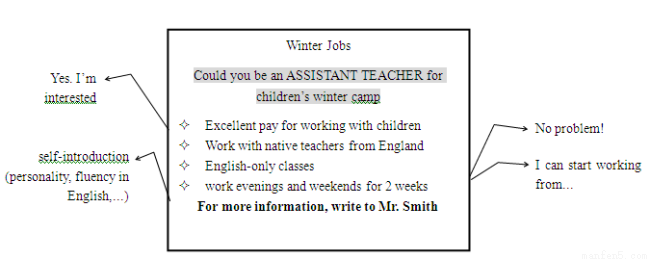题目内容
Since Henry Ford turned it into a mass-market product a century ago, the car has delivered many benefits. It has promoted economic growth, increased social mobility and given people a lot of fun. But the car has also brought many problems. It pollutes the air, creates traffic jams and kills people. An astonishing 1.24 million people die, and as many as 50 million are hurt, in road accidents each year.
Drivers and passengers waste around 90 billion hours in traffic jams each year. In some car-choked cities as much as a third of the petrol used is burned by people looking for a space to park.
Fortunately, a new technology promises to make motoring safer, less polluting and less tendency to hold-ups. “Connected cars”--which may eventually develop into driverless cars but for the foreseeable future will still have a human at the wheel-can communicate wirelessly with each other and with traffic-management systems, avoid walkers and other vehicles and find open parking spots.
Some parts of the transformation are already in place. Many new cars are already being fitted with equipment that lets them keep their distance and stay in a motorway automatically at a range of speeds. Soon, all new cars in Europe will have to be able to warn the emergency services if their on-board sensors(传感器) discover a crash. Singapore has led the way with using variable tolls(道路通行费) to smooth traffic flows during rush-hours; Britain is pioneering “smart motorways”, whose speed limits vary constantly to achieve a similar effect. Combined, these new inventions could create a much more highly effective system in which cars and their drivers are constantly warned of dangers and showed the ways, traffic always flows at the proper speed and vehicles can travel closer together, yet with less risk of crashing.
In the past, more people driving meant more roads, more jams, more death and more pollution. In future, the connected car could offer mankind the pleasures of the road with rather less of the pain.
1.According to Paragraph 2, the problem of parking has resulted in ______.
A. more time on the road
B. a great waste of fuel
C. even heavier traffic jams
D. increased death and injuries
2.What does “a similar effect” in the Paragraph 4 refer to?
A. Reducing traffic jams.
B. Building smart motorways.
C. Setting proper speed limits.
D. Keeping steady traffic flows.
3.What is the author’s attitude towards connected cars?
A. Curious. B. Doubtful.
C. Supportive. D. Disappointed.
4.Which of the following can be the best title of the text?
A. The Future of Cars: Wireless Wheels
B. The Future Traffic Management System
C. The Benefits and Problems of Cars
D. The Promising Future of Car Production
1.B
2.D
3.C
4.A
【解析】
试题分析:文章主要介绍了未来的汽车。汽车给人们带来方便之余,也给人们的生活带来了许多问题,甚至威胁到了人们的生命和安全。幸运的是,一项新科技有望减少污染和拥堵,并使驾驶变得更安全。
1.In some car-choked cities as much as a third of the petrol used is burned by people looking for a space to park.”可知,在一些拥挤的城市里,寻找停车位所耗费的汽油占汽油使用量的三分之一,说明停车造成大量汽油的浪费,故选B。
2.Singapore has led the way with using variable tolls(道路通行费) to smooth traffic flows during rush-hours”可知,新加坡通过使用浮动的道路通行费来疏导车流,英国也正在采取措施来取得类似的效果,故选D。
3.these new inventions could create a much more highly effective system”和第五段“In future, the connected car could offer mankind the pleasures of the road with rather less of the pain.”可知,作者认为这种新的发明能创造出一种更有效的交通体制,在带给人们驾车的乐趣的同时,也会减少事故带来的伤痛,说明作者对这项发明是支持的,故选C。
4.a new technology promises to make motoring safer, less polluting and less tendency to hold-ups. “Connected cars”--which may eventually develop into driverless cars”和第四段“Many new cars are already being fitted with equipment that lets them keep their distance and”与第五段“In future, the connected car could offer...”可知,文章主要讲的是未来的汽车,而不是未来的交通管理系统,故选A。
考点:科技类短文阅读

 快捷英语周周练系列答案
快捷英语周周练系列答案请用英语写一篇短文,介绍《时代》杂志2014年度人物“埃博拉斗士”。内容如下:
[写作内容]
《时代》年度人物评选概况 方式:每年由《时代》杂志编辑们选出 标准:给新闻和人们生活带来最大影响的个人或团体 2014年度人物情况 获选者:“埃博拉斗士” 宣布时间:2014年12月10日 获选原因:护理人员为抗击埃博拉病毒而努力工作,此病毒在西部非洲爆发,夺去数以千计患者的生命。 封面人物:两名医生,一名护士,一名救护车司机,一名卫生保健工作者,共五人登上杂志封面。其中有: Salome Karwah,父母均死于埃博拉, 她幸存下来,康复后照料其它病患者; Kent Brantly,美国医生,在非洲医治病人时染上埃博拉病毒,后康复 |
参考词汇:埃博拉斗士 the Ebola fighters
《时代》年度人物 Time's Person of the Year
卫生保健工作者 health care worker
[写作要求]
只能用5个句子表达全部内容。
[评分标准]
句子结构准确,信息内容完整,篇章连贯。
